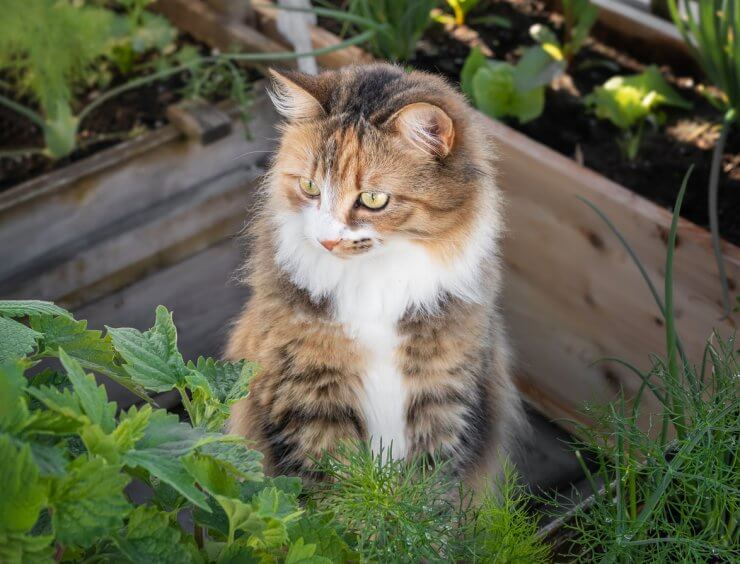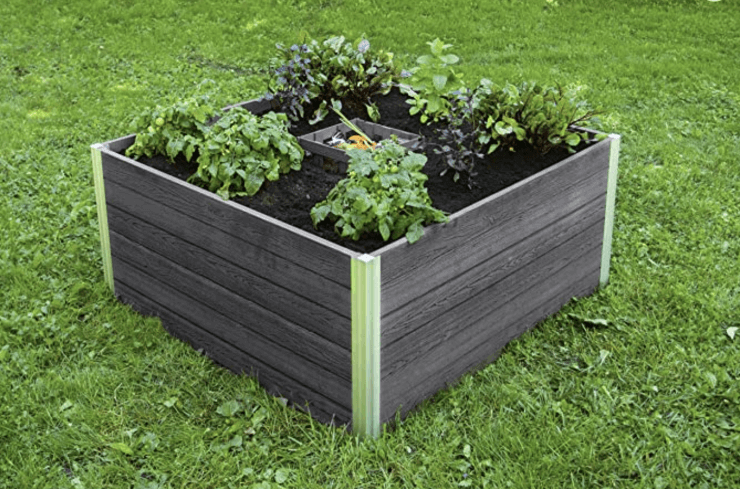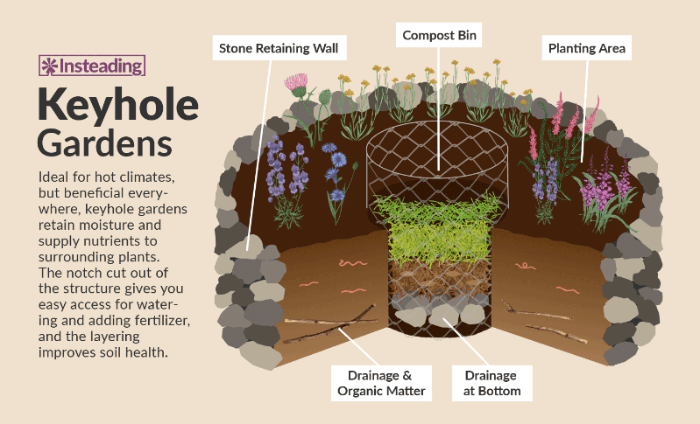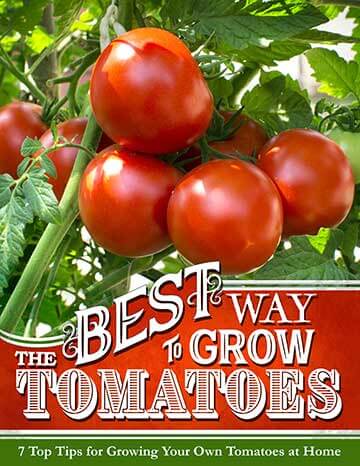
I love when I can get a two-for-one deal when it comes to gardening, especially when the deal is on back-breaking labor! If you’re like me, then I think you’ll be particularly interested in keyhole gardens. Maybe you’ve heard of a keyhole garden, but just aren’t sure what it is. Or perhaps the concept is entirely new. In fact, keyhole garden beds are relatively new in the U.S. They originated in southern Africa, where they were developed as a way to garden with limited water in hot, arid conditions.
A clever garden
A keyhole garden is a compost bin and garden in one place. The design takes advantage of sustainable practices and smart, layered design to build a garden that is productive, easy to maintain, and rich in recycled material. Keyhole gardens can thrive in drought conditions, as they don’t require much water. And the design of some of these gardens makes them easily accessible for people with mobility issues. It’s also a great way to incorporate sustainable practices into a garden design. And by all accounts, these gardens are highly productive. But what exactly are they?
Discover 7 top tips for growing, harvesting, and enjoying tomatoes from your home garden—when you access the FREE guide The Best Way to Grow Tomatoes, right now!
Writing for the Illinois Extension, horticulturalists Ryan Pankau describes a keyhole garden as “a form of raised bed, typically circular in design, that employs active composting to replenish and build new soil. The centerpiece of a keyhole garden is a “basket” that the gardener continually deposits compost and water into. The compost basket extends above the raised bed allowing water and nutrients from the compost to enter the soil, replenishing it continually as compost is added and decomposes.”
As you can imagine by the name, keyhole gardens are generally shaped like an old-fashioned skeleton keyhole. They are square or circular, possibly with a cutout on one side that ends at an inner circle or square. Often, the pre-made ones you can buy don’t have the cut-out that you can walk into. Instead they simply have a circle or square compost area in the middle of the garden, like the product below.
The one below, from Amazon is under $200, but like most things, they can get pretty expensive once you start moving up in size. They’re also easy enough to make on your own. This one doesn’t have the traditional cut-out, but it’s also small enough that most gardeners could bend over to garden or compost.

Vita Keyhole Garden via Amazon
Keyhole gardens have also been described as looking like a pie with a slice cut out. Or maybe, if you’re of a particular generation, you could say it looks like Pac-Man.

Keyhole garden diagram via Insteading.com
These gardens are typically about 3 – 4 feet tall and 6 feet around, with a center compost bin that has permeable sides and a top that is raised above the rest of the garden. The center of the raised bed slopes gently outward, so the edges are slightly lower than the center. This allows all the water and composted nutrients to permeate out.
Your DIY keyhole garden bed
The nice thing about a keyhole garden is that the concept is amenable to a lot of variation. The only real parameters are that your center compost tube should be about a foot to 18 inches in diameter, and the total circumference should be about six feet across. It doesn’t even need to necessarily be entirely round.
Likewise, you can construct the walls of your raised bed from pretty much any materials that will hold in the soil. Rocks, corrugated metal, lumber, wood, bricks, cinderblocks, tree stumps, or really anything you can think of could work.
Where you do have to follow some “rules” is in constructing your center compost bin. The idea here is that you want something that will hold in the compost and still be permeable enough that water and composted nutrients can flow away from the bin and into the rest of the garden. In addition, it needs to be tall enough to go from the bottom of the garden to about a foot over the top. So in a 3-foot-tall garden, your compost bin would need to be around 4 feet tall. Chicken wire is a popular solution here as it’s inexpensive and maintains its structure with just a little support from metal rods.
The other important part of a keyhole garden is the layered construction. Here’s what that looks like:
- Start with a drainage layer at the bottom. This can include rocks, large sticks, small branches, or even broken terra cotta pots.
- Line the bottom with a larger “brown” layer. If you recall from composting, green and brown ingredients provide different nutrients and help control moisture. So this bottom layer of brown components would be larger items like sheets of cardboard.
- Add a layer of smaller brown material. Twigs, shredded newspaper, old leaves, and other brown items make up this layer of the garden bed. Water this layer thoroughly to help ensure the garden has moisture at these lower levels.
- Add a green layer. Fresh grass clippings, eggshells, fruit rinds, and anything else that would be green in your compost can go here.
- Add a layer of compost or topsoil. Or, ideally, a nice mix of compost and topsoil together would be your final layer. Remember that this layer needs to slope outward away from the center compost tube.
Your top layer will probably be thicker than the other layers. That’s expected. You can also go through the layers again. And remember, there are numerous ingredients you can use for each layer. Part of the idea of these gardens is that they take advantage of local resources.
Some people like to add a layer of mulch on top. That’s certainly acceptable, and it can help the garden retain moisture.
Once your garden is established, the only watering you need to do is through the compost tube. That’s part of the reason these gardens are so drought-friendly.
The environmental benefits of a keyhole garden bed cannot be overstated. In addition to efficient water usage, they can also use captured rainwater or greywater from homes. In one case study in Samoa, researchers found that these gardens either “directly or indirectly” addressed issues such as overuse of clean water, changes in rainfall amounts, increasing storm severity, management of household waste, and other environmental issues.
Have you tried making a garden bed like this? How did it work for you?
Discover 7 top tips for growing, harvesting, and enjoying tomatoes from your home garden—when you access the FREE guide The Best Way to Grow Tomatoes, right now!



